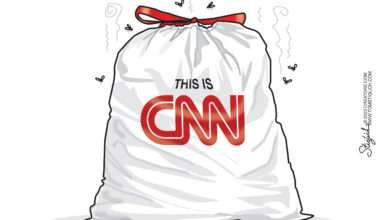Economics 101: How 2017 Minimum Wage Increases Will Negatively Impact the Economy

BY ALEX PAUL
As 2016 draws to a close, one cannot help but wonder what will come in 2017. Yes, Americans will be able to peacefully watch the sunrise knowing that Donald Trump will be our next President, but as I’ve said in my article about the Democratic Party, we’ve only won the battle. Although it was an important one, we aren’t even close to ending the war yet. The decisions made by lawmakers concerning the minimum wage for 2017 proves this statement; of the 50 States, twenty-two are going to be raising their minimum wages throughout the year.
From lowest to highest wages by the end of 2017:
Missouri: $7.65
Florida and Montana: $8.05
Ohio: $8.10
New Jersey: $8.38
Arkansas: $8.50
South Dakota: $8.55
Michigan: $8.90
Maryland and Hawaii: $9.25 (HI starting January 1, MD starting July 1)
Colorado: $9.30
Alaska: $9.75
Oregon: $9.75 but increasing to $10.25 July 1
Vermont, Arizona and Maine: $10.00
Connecticut: $10.10
California: $10.50 (statewide only; exclusive of San Francisco, Los Angeles, etc.)
Washington State, New York and Massachusetts: $11.00
Washington, D.C.: $12.25
For someone ill-informed in the discipline of American economics, this would be music to their ears; the consumers would have more money, which would compel them to spend more, giving a fraction of that revenue back to different businesses, and continuing the cycle. While this strategy would be easier to execute, it is idealistic and flawed by design. Take the Great Recession of 2008 for example; the newly-elected Barack Obama issued a sort of “repayment” of around $500 for every household in hopes that it would get them to start spending again. Lo and behold, a majority of these households never spent a dime of this money during the Great Recession. But why?
Enter Keynesian economics. While many sections within this school of economic theory are nearly identical to America’s traditional economy, there are two particular details that can explain the reason behind the households’ apprehensions with spending: in Keynesian economics, unhindered spending is encouraged, and the constant production of paper money is imperative.
With spending, not many people used their $500 repayments because their outlooks on the future were grim; instead of indulging themselves with a new electronic or having a fun night out, consumers saved the money for necessities such as bills and taxes, which are both paid on a monthly rate at the very least.
With production of paper money, the thought of continuously printing is downright absurd. In a stable economy, each individual dollar gradually loses value when there is a high amount of money in circulation; this means you would need more money to satisfy a purchase, since prices would increase due to a high circulation rate normally equaling wealthier households. To illustrate, let’s examine two made-up economies; one has ten dollars in circulation with the prices increasing by one cent for every dollar added, and the other has one-thousand dollars in circulation with the prices increasing by ten cents for every dollar added.
Automatically, each individual dollar in the first economy would be worth more; 1/10, or 10%, while each individual dollar in the second economy would be worth less; 1/1000, or .1%. When applying the price rule, the first economy would have less dollars in circulation (1/11, or ~9%), yet lower prices ($1.01, $1.02, etc.), while the second economy would have more dollars in circulation (1/1001, or ~.09%), yet higher prices ($1.10, $1.20, etc.).
Circling back to the Great Recession, real GDP for America drastically fell from a combination of the housing market collapsing and the stock market bubble popping. Yet, because of the increase of overall household wealth because of Obama’s repayments, prices increased, which threw off the balance between prices and Gross Domestic Product even more than before.
However, there is another half to why prices increased before, and why prices will continue to increase when 2017 is upon us: the minimum wage increases will cause labor costs to rise for businesses in the twenty-two states listed above. Not only will businesses lay off employees or assign fewer workers for a given day to compensate for the jump, they will undoubtedly raise the prices on the goods and services they sell. As a result, the national economy will eventually be hampered once again, causing the Zombie Economy to become more dead than alive.
Even with Trump being the next American President, 45 out of 50 states have an established state minimum wage (Louisiana, Tennessee, Mississippi, Alabama, and South Carolina are the five that don’t), which means Trump won’t be able to change the labor costs for any of the twenty-two states listed above, as well as the other twenty-three states with no minimum wage changes in 2017.
Unfortunately, the war is still a long way from its conclusion; in fact, it’ll get even more brutal than ever after January 20th.




